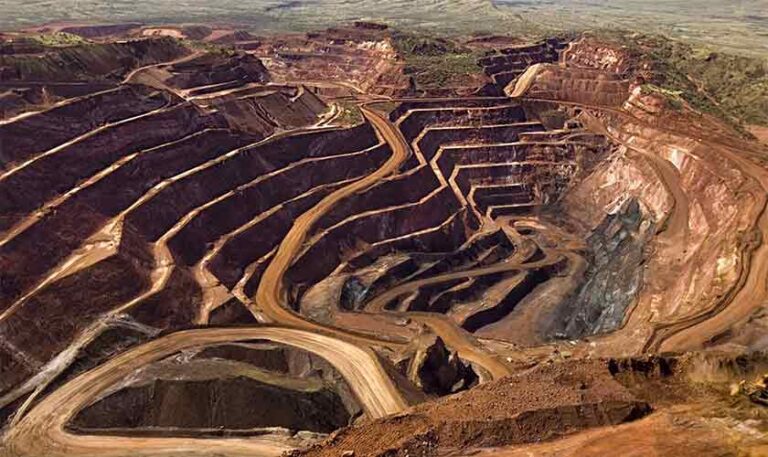ust as oil shaped the geopolitics in the 20th Century, critical minerals have come to define the new frontier of economic value, determining which nations lead the clean energy transition. The history of human development has always been closely associated with the quest for gold, oil and land. It is now developing into a rush for minerals on which the clean energy future of the world will depend.
In the fast-changing global economy, the high-value sectors, especially those that are anchored on technology, have gained a central role in economic resilience, transformation of industries and strategic competitiveness.
Lithium, cobalt, nickel and rare earths are no longer mere commodities; they are strategic facilitators of the global clean energy transition as they have become the basis of technologies including electric mobility, renewable generation and mass battery storage.
Lithium and rare earths supply chains are redrawing the global influence map. From the Lithium Triangle of South America to China’s mineral refineries and Africa’s cobalt belts, nations are racing to secure the building blocks of the clean energy economy.
The world is witnessing a new geopolitical alignment not over barrels of crude oil, but over ever more efficient batteries. To diversify supply and reduce dependence on single sources, countries are competing to dominate the EV battery supply chain, leveraging critical minerals for industrial development. Their core position in the formation of industrial competitiveness and national energy security is highlighted by the accelerating demand of the resources.
Geologically, Pakistan has significant underexplored potential. Regions such as Chagai in Balochistan, Gilgit-Baltistan and parts of Khyber Pakhtunkhwa contain promising deposits of copper, rare earths and antimony. If developed strategically, these regions could become the foundation of new green industries from electric vehicle components and battery systems to renewable technology manufacturing.
In this evolving global context, Pakistan’s emergence as a participant in the critical minerals value chain marks a significant strategic breakthrough. Pakistan’s first shipment of enriched rare earth elements and critical minerals to US Strategic Metals symbolises not just a trade milestone but also a new chapter in economic diplomacy and climate cooperation. The historic shipment including antimony, copper concentrate and rare earth elements shows that Pakistan has the potential of becoming an active player in the world clean technology ecosystem.
As essential materials in the future of energy transition in the world, these minerals are important constituents of the electric vehicle motors, wind turbine magnets and high-performance energy storage systems. The partnership system of $500 million backing this exchange also shows that Pakistan has gone beyond exporting raw materials and towards value addition industrial cooperation.
Such partnerships have far reaching economic, strategic and environmental consequences. The country is transitioning into a clean energy value chain importer, rather than an energy importer. Pakistan can diversify its export base, encourage foreign direct investment, enhance the resilience of its industry by incorporating critical minerals in its national development agenda in line with its nationally determined contributions (NDCs) under the Paris agreement. The incorporation of the value chain development process up to refinery establishment is an opportunity to localise manufacturing of clean technologies, train skilled labour and reinforce green industrialisation practices.
To keep this going, Pakistan should make sure that its development in the critical minerals sector is marked by strong governance, transparency and environmental stewardship. It is necessary to establish a regulatory and institutional framework for exploration, extraction and value addition in accordance with the international environmental, social and governance (ESG ) standards.
An autonomous National Critical Minerals Authority may be a single point of coordination to facilitate approvals, foster investment and to enforce sustainability standards and community protection. Traceability systems, third-party certification and clear revenue-sharing schemes must be treated as paramount. This is critical for nvestor confidence.
Pakistan should also focus on capacity building and technology association in order to ensure cleaner mining, reduce ecological footprints and incorporate climate resilience in its industrial planning. Through the integration of sustainability into its mineral strategy, Pakistan can make its natural endowment a source of inclusive development, so that the local communities share in the growing contribution to the global clean energy transition by the country.
Pakistan’s joining the international trade in the critical minerals is a game-changer. The recent export to the United States points to untapped strategic potential in the clean energy value chain. Its full potential can only be realised through visionary cooperation and policy formulation. Through alliances with technologically advanced countries, especially the US, Japan and the EU, Pakistan can gain access to the best processing technology, financing tools and climate-corrected supply chains.
At the same time, it can establish itself as a regional centre of responsible mineral extraction and green production and become the home of both domestic industrialisation and global decarbonisation. The pathway will not only be consistent with its NDCs and decarbonisation roadmap but also enhance its position in green trade regimes and climate diplomacy at the global level. The critical minerals development can be a pillar of sustainable prosperity and energy security. This requires the right blend of economic foresight, institutional reform and international cooperation.
Pakistan can align its critical minerals governance with its climate goals, exporting not just ores but also climate solutions. In this transition, minerals are not just resources; they are instruments of resilience, diplomacy and green growth.
The writer is a senior research associate at Sustainbale Development Policy Institute. She can be reached at saleha@sdpi.org;saleha.qureshi7@gmail.com
Images are for reference only.Images and contents gathered automatic from google or 3rd party sources.All rights on the images and contents are with their legal original owners.

